#crown princess josefina
Text


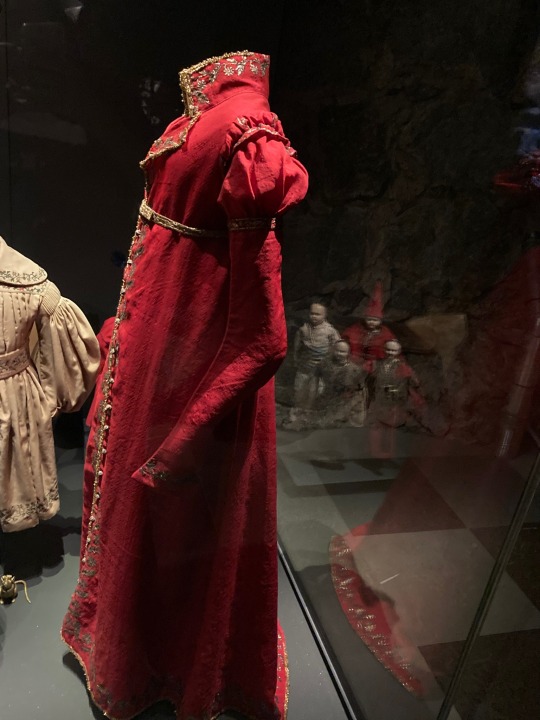
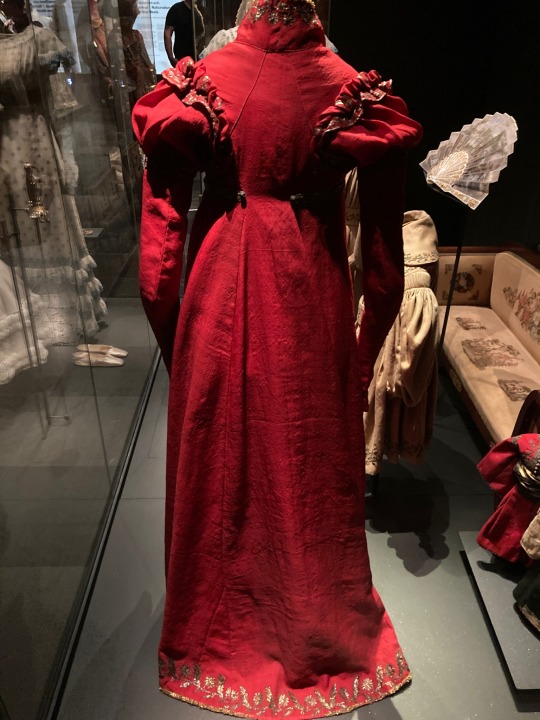


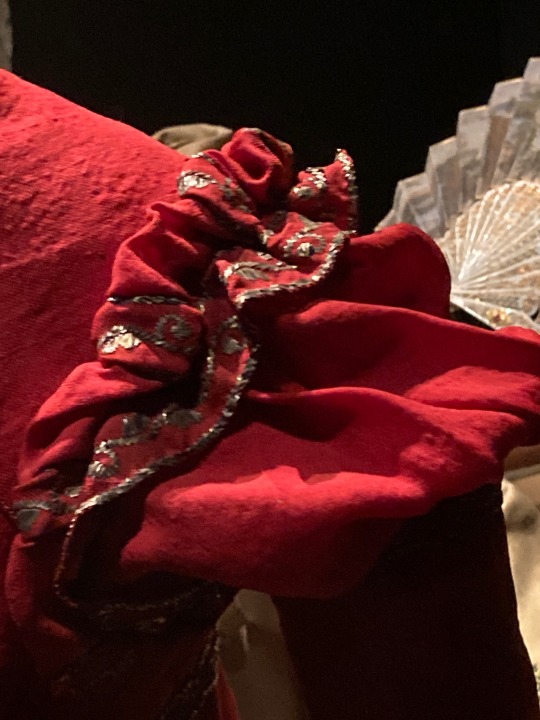
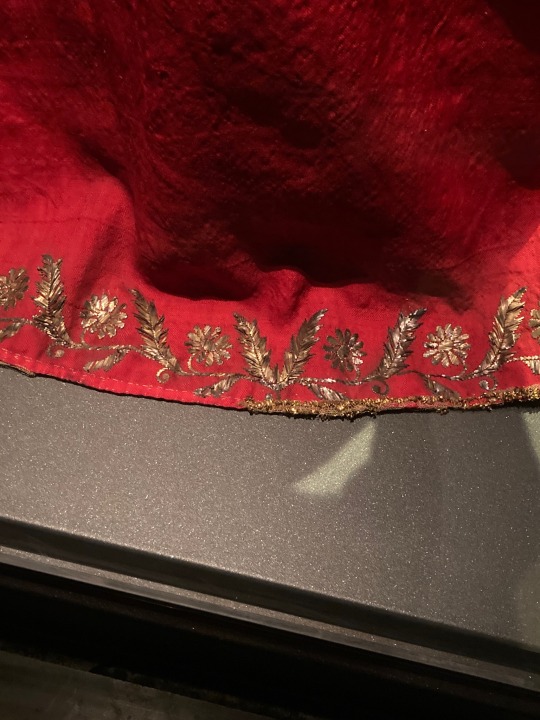

Crown Princess Josefina's Red Redingote With Small Gold Wire Buttons
Circa 1810s
The Royal Armoury
Stockholm, Sweden
#redingote#extant garments#1810s fashion#empire fashion#gold embroidery#gold buttons#crown princess josefina#royal armoury#stockholm#sweden
109 notes
·
View notes
Text


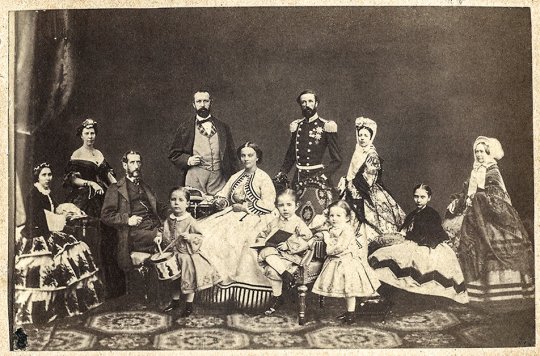
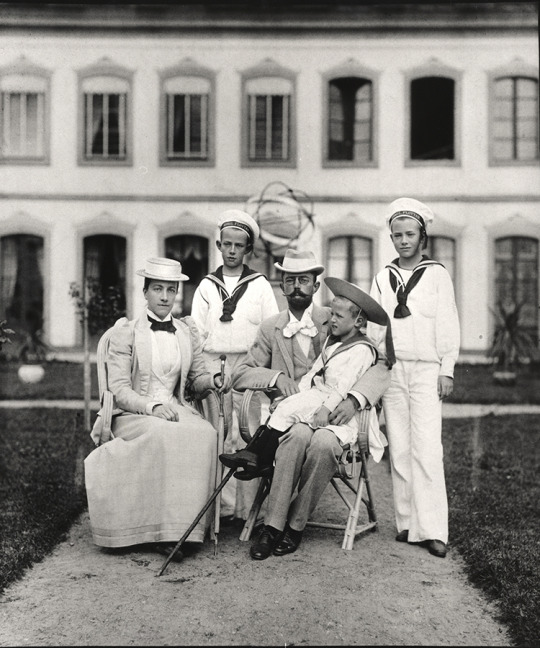


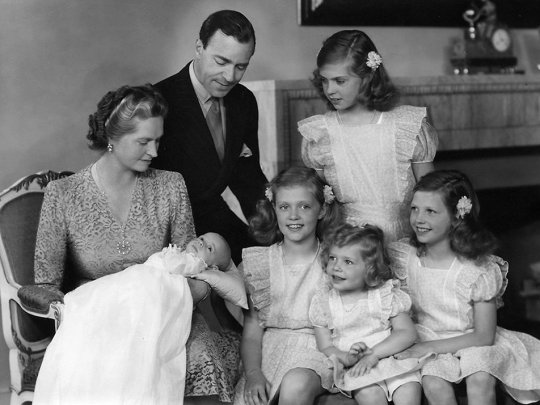

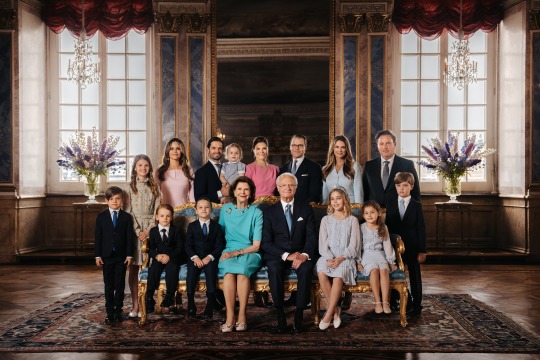
Family portraits of the House of Bernadotte
1837: King Karl XIV Johan, Queen Desideria, Crown Prince Oskar, Crown Princess Josefina, Hereditary Prince Karl, Prince Gustaf, Prince Oscar, Princess Eugenia & Prince August together with a bust of King Karl XIII (who chose Karl XIV Johan as heir)
1857: Prince August, Princess Sofia, Prince Oscar, Crown Prince Carl, Princess Eugenia, Queen Josefina, King Oskar I, Princess Louisa & Crown Princess Lovisa. Dowager Queen Desideria is missing from the photo.
1864: Princess Eugenia, Queen Lovisa, Prince August, King Karl XV, Princess Teresia, Prince Oskar (heir apparent), Princess Sofia, Princess Louisa, Dowager Queen Josefina, Prince Gustaf, Prince Oscar, Prince Carl.
mid-1890s: Crown Prince Gustaf & Crown Princess Victoria with their three children, Hereditary Prince Gustaf Adolf, Prince Wilhelm & Prince Erik.
1905: Prince Eugen, Prince Oscar, Princess Bernadotte (Ebba Munck), Princess Teresia, Prince Wilhelm, Queen Sofia, Princess Margareta, King Oscar, Prince Gustaf Adolf, Crown Princess Victoria, Prince Erik, Crown Prince Gustaf, Princess Ingeborg with daughters Märtha & Margaretha, Prince Carl.
1912: Crown Prince Gustaf Adolf & Crown Princess Margareta with Hereditary Prince Gustaf Adolf, Prince Sigvard, Princess Ingrid & the newly born Prince Bertil.
1946: Hereditary Prince Gustaf Adolf & Princess Sibylla with daughters Princesses Margaretha, Birgitta, Désirée & Christina & the newly born Prince Carl Gustaf.
1985: Queen Silvia, Crown Princess Victoria, Princess Madeleine, Prince Carl Philip & King Carl XVI Gustaf.
2023: Prince Oscar, Princess Estelle, Princess Sofia, Prince Carl Philip holding Prince Julian, Crown Princess Victoria, Prince Daniel, Princess Madeleine, Sir Christopher O'Neill, Prince Nicolas, Prince Gabriel, Prince Alexander, Queen Silvia, King Carl XVI Gustaf, Princess Leonore & Princess Adrienne.
#swedish royal family#kungafamiljen#official portrait#did they seriously not take any photos or painted any portraits of the entire family post 1905?#all photos and portraits I could find during the 20th century was focused on individual couples and not the entire extended family#royaltyedit
31 notes
·
View notes
Photo

Princess Josefina of Norden, Dowager Queen of Alland (1761-present)
Princess Josefina was born in 1761 at the Brunsbuttel Palace to Karl Duke of Norden and Princess Helene of Vasa. She was the eldest surviving daughter of the royal couple who suffered multiple miscarriages in the previous years. Josefina was raised at the royal court in Brunsbuttel which was highly sophisticated and evolved to become one of the most splendid courts in the continent. Josefina was very close to her older brother Wilhelm whom she shared a governess with in her youth. Josefina would be joined by four more sisters, being especially close with her twin sisters Princess Maria Theresa and Princess Paulina. Josefina learned six languages and became skilled in the piano, the harp, the flute, and the clarinet. In 1776, Josefina was married to King Oscar IV of Alland in a grand ceremony. The match was arranged by her cousin, King Charles XII of Vasa to cement an alliance between the neighboring country. Josefina was destined to become an amazing consort and a leading lady at court. Josefina was not particularly close to her husband Oscar but she had ambitions of her own which she sought to achieve by whatever means necessary. She ended up having tremendous political influence over her husband. She was said to have influenced her husband to allow women to serve in public offices as well as to have the right to vote for their leaders in the Alland Parliament. In 1779, she gave birth to Crown Prince Charles of Alland who would later become King Charles III. Josefina would have two more successful pregnancies, giving birth to Princess Maria Eleanora who would become the Queen Consort of Vasa, and Princess Josefina Luise Landgravine of Ansbach. Josefina influenced her husband to join Norden, Wardenburg, and Augustinia in the Second Calais War, providing aid in troops and arms. Josefina was a very controlling mother, causing a strain between her and her children in the future. In 1790, Josefina suffered a fatal miscarriage and was bedridden for five months. Oscar and his sister Maria Amalia helped nurse Josefina back to health during this difficult time, causing the couple to become closer. In 1797, Josefina’s son, Charles, was married to Princess Louise of Wardenburg, the eldest daughter of the King of Wardenburg. This marriage cemented an alliance between the two countries who were historically opposed to each other for a century. Charles and Louise would have three children, Prince Oscar, Princess Amalia, and Prince Haakon. In 1796, Maria Eleanora was married to the twice widowed King Charles XII of Vasa. Maria Eleanora was heavily opposed to the marriage and loathed the older king. Maria Eleanora begged her father to call off the betrothal but he refused. Maria Eleanora would blame her mother for the rest of her life for the loveless marriage that she would endure. Josefina’s daughter, Josefina Luise whom she had named after herself, was married to Rudolf the Landgrave of Ansbach. Rudolf and Josefina Luise had a much happier marriage and had grown up to love her mother unlike her two older siblings. In 1804 tragedy struck when King Oscar died, leaving Josefina a widow. Josefina, instead of mourning, decided to bury herself into political work by trying to influence and assist her son. The new King Charles of Alland would not budge, and resisted her help. Josefina took very much offense to this, and started to snub her daughter in law the new Queen by not inviting her to society events. Throughout Josefina’s life she remained close to her sisters Paulina, Louise, Maria Theresa, and Viktoria. After the death of Maria Theresa she was devastated and traveled all the way to Porto to be there for her sister’s widower. Josefina always cared for her sister Viktoria and was saddened by her marriage as she hated Prince Heinrich for his poor status. Josefina like the rest of her siblings helped Viktoria financially and sent funds to renovate Schloss Rostock. Josefina became the godmother to Viktoria’s eldest daughter, Princess Sophie who is the prospective bride to the Tsarevich of Beloshov. Josefina remains a revered figure in Eusalia due to her overbearing political influence over her husband which has helped Alland become more involved in the affairs of the main continent.
#SophieOfRostock#SOR#sims 4#the sims#s4#sims 4 royalty#royals#royalty#ts4 royals#history#the sims 4 history#historical#ts4 history#s4 history#sims 4 historical#edit#ts4#sims 4 royals#royal#historical royalty
79 notes
·
View notes
Text


The unique gold, pearl, and cameo tiara from the Swedish royal vaults is packed with history and symbolism, from its initial creation story in Napoleonic France to the tales told by the individual cameos in the piece. Today, we’re unpacking both, with some fantastic close-up views of the parure.
The Cameo Parure, now owned by the Bernadottes of Sweden, was originally given by Napoleon I to Empress Josephine in 1809. The set includes a tiara, a necklace, a bracelet, and a pair of earrings. Today, the parure also includes a brooch, which is believed to be a slightly later addition to the suite. Above, Queen Silvia wears the entire parure—tiara, earrings, necklace, brooch, and bracelet (on her right wrist)—for the Nobel Prize ceremony in 2005.
The tiara made its way from imperial France to royal Sweden by a slightly circuitous route. It was inherited by Josephine’s son, Eugene de Beauharnais, and then passed on to his daughter, Queen Josefina of Sweden and Norway. She bequeathed the cameos to her daughter, Princess Eugenie; she bequeathed it to her nephew, Prince Eugen. He gave the set to Princess Sibylla, mother of the present king, as a wedding gift in 1932, and it has remained with the Bernadottes in Stockholm ever since.
With a central cameo depicting two gods of love, and a shape resembling traditional Scandinavian bridal crowns, it’s no surprise that this fragile, delicate heirloom has become the Bernadotte family bridal tiara. It’s been worn by two of the king’s sisters, Princess Birgitta and Princess Desiree, on their wedding days. It was also worn by his wife, Queen Silvia, at their wedding in 1976, and by their elder daughter, Crown Princess Victoria, at her wedding in 2010.
13 notes
·
View notes
Text
The Four Amigos in Once Upon A Time

Adria Arjona as Elena Castillo Flores. Age range (16-28). Crown princess and later queen of Avalor, Elena was trapped in a magical amulet for 41 years before she was freed by her distant relative, Ella. With Ella's help, along with help from Ella's friends Henry and Regina, Elena took her kingdom back from the evil sorceress Shuriki.

Rafael Silva as Gabriel Núñez. Age range (18-30) General Gabe Núñez, formerly captain of the guard, is one of Elena's best friends. Brave and loyal, he would lay down his life to protect those he loves and Avalor.

Chloë Grace Moretz as Naomi Turner. Age range (15-27). The Royal Chancellor of Avalor, Naomi was formerly a member of the Grand Council. She was born in the Magical Forest, but was raised in Avalor since she was two. Having grown up in Avalor Harbor, she was chosen by Elena to serve on the council because of her pragmatism and perseverance.

Jorge Lendeborg Jr. as Mateo de Alva. Age range (16-28). Mateo is the Royal Wizard of Avalor. The grandson of the former Royal Wizard, Alacazar, Mateo was born with magic. However, he was forced to hide it because of Queen Shuriki's ban on magic. But that didn't stop him from practicing in secret.
Elena's family/The Royal Family

Lillianna Valenzuela and Rachel Zegler as Isabel Castillo Flores. Age range (10-22). Valenzuela as Isabel ages 10-14. Zegler as Isabel ages 15-22. Princess Isabel is Elena's little sister. With a mind for science and engineering, she becomes Avalor's Royal Inventor. She, along with her maternal grandparents, was imprisoned in an enchanted painting where none of them aged for 41 years.



Tony Plana as Francisco Flores and Alma Martinez as Luisa Flores. Age range (old enough). Francisco and Luisa are the maternal grandparents of Elena. Francisco is a member of a very old noble Avaloran family. He had a sister, Josefina Flores (oc) who married a baron from the Magical Forest. Their great granddaughter is Ella. Luisa is from another Avaloran noble family, but the family fell on hard times. Luisa's grandparents opened up a chocolate shop, La Vida Dulce, which was closed down during Shuriki's rule. At some point Luisa reopens the shop. Francisco and Luisa were both members of the Grand Council.
David DeSantos as Esteban Flores. Age range (50s-60s, but appears 30s-40s because he exfoliates). Esteban is the maternal first cousin of Elena and Isabel. His mother, Margarita, was the sister of their mother, Lucia. When Esteban was little, his parents died in a blizzard at sea. He was raised by his grandparents. As a teenager, he felt unseen and desired power. He agreed to help Shuriki invade Avalor in exchange for political power under her reign. He made Shuriki promise that his family would be unharmed. Shuriki had no intention of keeping the promise and assassinated his aunt and uncle, Queen Lucia and King Raul. Esteban was the only member to age during Shuriki's 41 years of rule. Around 3 years after Shuriki's defeat, Esteban's involvement in her take over was revealed and he was banished from Avalor. His family did eventually forgive him and he was welcomed back home.
#elena of avalor#eoa#eoa x ouat crossover#elena castillo flores#gabe nunez#naomi turner#mateo de alva#isabel castillo flores#francisco flores#luisa flores#esteban flores#ouat#ella mills#henry mills#regina mills#once upon a time#ouat s7
38 notes
·
View notes
Text
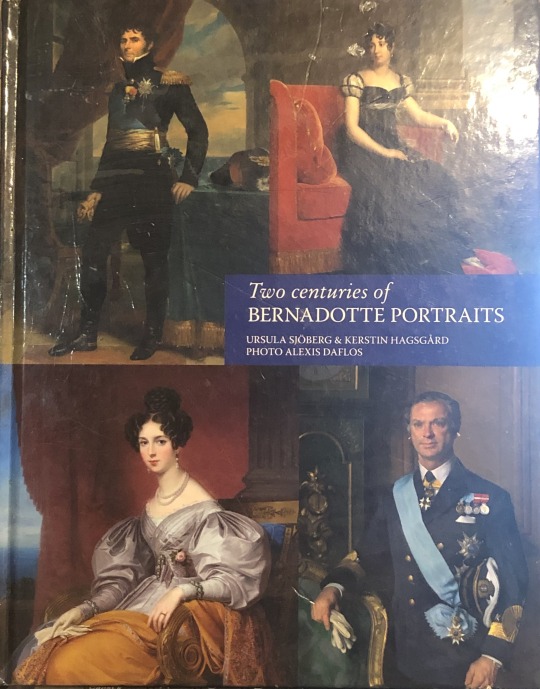








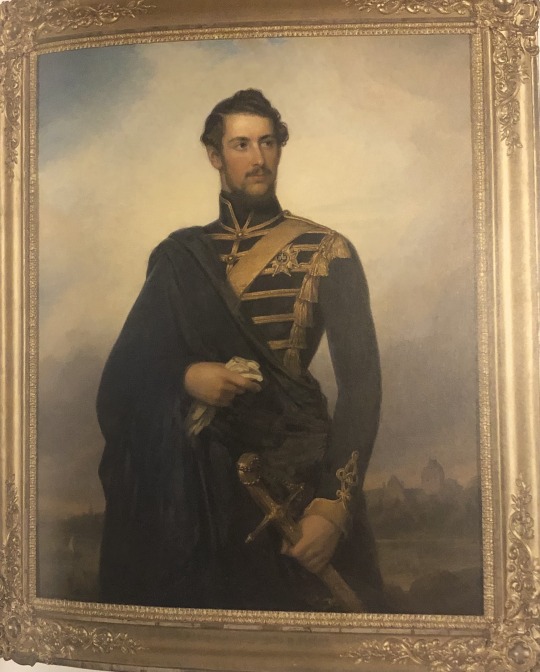
Books in my collection:
Two Centuries of Bernadotte Portraits (2008)
Ursula Sjoberg, Kerstin Hagsgard
Photos: Alexis Daflos
Photos are:
1. Cover
2. Jean Baptiste Bernadotte, Karl XIV Johan as Crown Prince (1763-1844)
3. Desiree Clary, Queen Desiree as Princess of Ponte Corvo (1777-1860)
4. Desiree Clary, Queen Desiree as Crown Princess (1777-1860)
5. Oskar I as Crown Prince (1799-1859) (Son of Bernadotte and Desiree--godson to Napoleon)
6. Queen Josefina as Princess of Leuchtenberg (1807-1876) (Daughter of Eugene de Beauharnais and granddaughter of Josephine)
7. Oskar I (1799-1839) (Son of Bernadotte and Desiree; godson to Napoleon)
8. Queen Josefina as Crown Princess (1807-1876) (daughter of Eugene de Beauharnais, granddaughter of Josephine)
9. Sons of Oskar I in the grounds of Drottningholm Palace, Karl, Gustav, Oskar, and August (grandsons of Bernadotte/Desiree, grandsons of Eugene de Beauharnais, great-grandsons of Josephine)
10. Karl XV as Crown Prince (1826-1872) Son of Oskar I, grandson of Bernaotte/Desiree, grandson of Eugene de Beauharnais, great grandson of Josephine)
#books in my collection#my collection#my stuff#Bernadotte#Bernadotte dynasty#Desiree Clary#Desiree Bernadotte#Desiree#Jean Baptiste Bernadotte#Josephine de Beauharnais#Empress Josephine#Oskar I#Queen Josefina#Karl XV#Karl XIV Johan#Ursula Sjoberg#Kerstin Hagsgard#Alexis Daflos#Eugene de Beauharnais#Napoleonic Collection#Napoleon Collection
22 notes
·
View notes
Text
Happy Halloween! (And Dolly Good Season week 6)
Prompt: Halloween
My dolls costumes!
Molly:
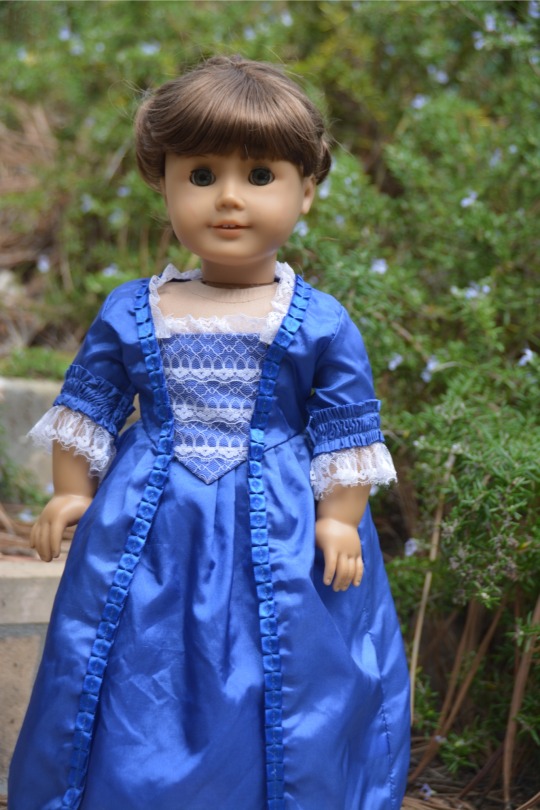

Molly dressed up as a Victorian lady! Her dress is Felicitys Christmas dress! It’s so pretty!!
Felicity


Miss Lissie dressed up as little red riding hood! Her cape is from her collection, her dress is Josefina’s meet outfit top, her corset I crocheted, and her shoes are off brand.
Addy!


Addy is… okay I don’t really know. I just love her hair!!! Her dress is AG, her shoes are AG, her crown is from a Disney princess doll, and her shawl is from scrap fabric.
Scarlet


Scarlet dressed up as a spice girl! I couldn’t really figure out which one, her outfit just gave me spice girl vibes! Her dress I crocheted and her shoes are AG.
Elizabeth


Elizabeth dressed up as a tacky tourist! She looks so funny! Her shirt is build a bear, her tank top is AG, her camera is AG, her shorts are off brand, her shoes are AG, and her sunglasses are Our Generation.
#american girl doll#agig#american girl dolls#molly mcintire#felicity merriman#elizabeth cole#addy walker#dolly good season
50 notes
·
View notes
Text
mexican empire — trivia

The empire (that is more formally known as the Second Mexican Empire) was started in 1864 by Emperor Armando, Jacqueline’s great-great-great-great grandfather. He was a lieutenant general within the Mexican army, and after he forced French forces out of Mexico and ordered their surrender, due to his wealth and influence (as he hailed from a Cuban-Mexican old money family), he declared himself emperor of Mexico due to his desire for the Mexican empire’s restoration.
During the reign of Jacqueline’s great-great grandfather—Emperor Gustavo Hernando—a socialist and wannabe dictator named Álvaro Angel Hernandez created an anti-monarchy “party” that wished to abolish the Mexican empire due to seeing the (then current) imperial family as corrupt. The party gained members, notoriety, and infamy throughout Mexico, and Álvaro had even gained some power over Mexico City and its neighboring territories. Álvaro seemingly went mad and randomly decided to storm the palace in an attempt to overthrow Emperor Gustavo. That attempt was unsuccessful, and Álvaro was tried with heavy treason and sentenced to death by hanging. His execution sparked the Guerra del Palacio (the War of the Palace), and the conflict lasted for three and a half years.
With the empire’s power, and with the help of Brazilian, Cuban, and later American troops, the Mexican empire defeated Álvaro’s party and prevented being replaced with an authoritarian, socialist regime. Since then, the War of the Palace has been the only civil war that the imperial family has had to face.
Mexico has one of the wealthiest imperial families in the world, having a net worth of $10.5 billion, and placing them at 5th on the list of wealthiest monarchs in the world. All of that money belongs to the emperor, and it stems from Mexico’s investments in the oil industry and agriculture, their various exports (such as beer, chocolate, chilis, and tomatoes), the support from the Mexican citizens, and from the emperor’s own investments into large scale banks around the world. The $10.5 billion will be split between the emperor’s immediate family (his daughters and his eldest daughter’s three children) upon his death.
Mexico became the first monarchy in the world to implement absolute primogeniture (meaning any child can assume the role of heir apparent to the throne regardless of their gender) in 1914. It was proposed by Emperor Gustavo after the birth of his three daughters after the birth of his eldest son. He was worried about the potential extinction of the dynasty if his son either died or was unable to marry or produce a male heir, and Gustavo’s own lack of another male heir only increased his worries. To ensure that the dynasty would live on, he proposed the idea of absolute primogeniture to the Mexican government.
His proposal was taken into question, as back then, women were seen as “unfit” monarchs and were seen as incapable of ruling a country. However, due to much pushing by the emperor over the course of eight months, by a vote of 71–63, absolute primogeniture was officially adopted in Mexico in regards to the empire’s line of succession. The empire received its first female heir apparent upon the birth of Crown Princess (now Empress) Victoria in 1967.
Since 1873, the empire of Mexico has also been known as the United Empire of Mexico (or the Imperio Unido de México) due to the numerous conquests ordered by Emperor Armando. Countries under the United Empire of Mexico include the Bahamas, Puerto Rico, Belize, Guatemala, El Salvador, Honduras, Costa Rica, and Panama. From 1891 to 1959 (68 years), Cuba was also a part of the United Empire, and monarchs and their consorts held the titles of Emperor and Empress of Cuba.
The Second Mexican empire started off with a rather large amount of wealth, as its founder, Lieutenant General Armando José Enrique Velasco, hailed from a Mexican-Cuban old money family that was worth $16.4 billion ($302.5 billion in today’s money) by Armando’s father’s death in 1867. Upon his father’s death, the money was split between Armando and his brother, with both of them receiving $8.2 billion ($151.2 billion in today’s money). That fortune has been slightly diminished and restored over the years.
The Second Mexican Empire is an absolute, hereditary, and self-proclaimed monarchy. It was originally a semi-constitutional monarchy during Emperor Alphons’ reign, and during Emperor Fernando’s reign, it became a complete constitutional monarchy. The empire only became an absolute monarchy after its restoration. It is a self-proclaimed monarchy due to Emperor Armando declaring himself the emperor of Mexico after defeating the French.
Emperor Alphons—Armando’s eldest son—had the shortest reign of any Mexican monarch ever, as he only reigned for 11 years. He was known to be somewhat sickly from birth, and his sickness worsened later in his life, resulting in his early-ish death. Alphons was also said to be attractive during his youth and was quite the notorious playboy before he met his wife and consort, Josefina Ivette Isabel Correia, Lady Salvaterra, to whom he was distantly related to.
In his youth, Emperor Gustavo had quite the large selection of noble and royal ladies to choose from for marriage (or rather, for his parents to choose from). From that selection, he had wed Princess Helena Dorothea Maria Anna of Greece and Denmark, Viscountess Württemberg, a member of the Greek royal family and of the German noble House of Württemberg. However, they’re relationship was rocky and they seemed more like acquaintances than husband and wife, and just a year later, Gustavo and Princess Helena divorced. However, their marriage did bring the Mexican, Greek, and Danish royal/imperial families closer together, and it solidified their relationship for the next four generations. Princess Helena was never given the title of empress. A few months later, Gustavo married Agustina Natalia Sophia, Baroness of San Luis de la Paz, and the daughter of the Duke of Guanajuato.
Emperor José Manuel established the most international connections for the Mexican empire, ranking just below his son, Fernando. His marriage to Yoo Hyeryun, a middle class Korean native, was one of them, as well as his ally-ship with India, his friendships with the British, Greek, and Spanish royal families, and his push for exports and the offering of support to foreign allies. José Manuel also has the second longest reign of any monarch in Mexico, placing behind his son.
Emperor Fernando became the first Korean-Mexican to ascend to the imperial throne after his father’s death in 1960. He also has the longest reign of any Mexican monarch, and will uphold that title until his daughter can manage to surpass him.
Empress Victoria became Mexico’s first female regent in all its 139-year history, which caused her to also have the most viewed coronation since her father’s in 1960, amassing a total of 81.5 million people in Mexico and 24 million people worldwide. Meaning, a total of 105.5 million people had watched Victoria’s coronation. She also became the second mixed Korean to ascend to the Mexican throne.
Empress Agustina was known for introducing a lot of foreign customs to Mexico during her husband’s reign. She was known for her love of travel and for her interest in other (specifically European) cultures. She introduced the Scottish Lomond waltz to the Mexican imperial court, and had also introduced the concept of debutante balls to the country, as she established Empress Agustina’s Debutante Ball (Baile de Debutante de la Emperatriz Agustina) after attending Queen Charlotte’s Ball in London.
Dowager Empress Consuelo Teresa (or Yoo Hyeryun) became the first Korean woman to assume the title of empress (consort) of Mexico upon her husband’s ascension to the throne in 1928. She achieved massive notoriety due to this (and also due to her beauty), and further established positive connections between Mexico and South Korea. She also became known as the first commoner to marry into the imperial family, and became the first commoner to assume the title of empress consort. She is also the longest living empress in the empire’s history, being 102 years old by the events of Trigger Happy Havoc.
There had actually been a empress regent of Mexico prior to Victoria, although she wasn’t officially counted as a reigning empress like Victoria. Her name was Princess Josefina Maria Lupita, and she was Emperor Alphons’ older sister, and Emperor Armando’s first born child. Due to Mexico’s male preference primogeniture at the time, Josefina was misplaced at heir to the throne once her brother was born. She didn’t see it as an issue until she was in her thirties. Just a few months after Alphons was crowned, Josefina secretly mobilized a part of Mexico’s military, and had ordered them to storm her brother’s apartments within Chapultepec Castle
A few dozen were injured during that attempt of a “coup,” and two had died due to their injuries. Alphons originally thought that the attack was ordered by anti-royalists, but he later found out that it was ordered by his own sister. He was quick to declare war on Josefina, who was forced to flee to Costa Rica with the remainder of her troops. The war—which was named the “War of the Chrysanthemum”—lasted for only seven months, before it eventually came to a stalemate due to the intervention of the siblings’ mother. Alphons wanted to keep Josefina in Costa Rica, but was advised not to. After the war, the siblings never even looked at each other again, and Josefina moved out of Chapultepec Castle and into a separate estate
During the war, Josefina had triumphed over her brother for a short period of time (about a month or two) and had become Empress Josefina, and was “ruling” from Costa Rica. However, as she had never had a formal coronation and as she had an incredibly short reign, historians do not count Josefina as a true sovereign, and the title of “first empress regent of Mexico” officially goes to Victoria. Technically, however, it goes to Josefina
Emperor José Manuel’s brother, José Ramón, Jacqueline’s great-great uncle, had married Princess Alexandra-Beatrice of Battenberg, the youngest daughter of Princess Victoria of Hesse and by Rhine, and of Prince Louis of Battenberg. Alexandra-Beatrice—Jacqueline’s great-great aunt—was the great-granddaughter of Queen Victoria, making the former queen of the United Kingdom Jacqueline’s great-great-great-great-great grandaunt.
Jacqueline’s great-aunt—Princess Valentina of Spain—is married to Prince Georgios of Greece and Denmark, Jacqueline’s uncle, and her title upon her marriage became Crown Princess Victoria of Greece and Spain. Crown Prince Georgios was formerly King George III of Greece, while Princess Valentina was Queen Valentina of Greece, the country’s first Spanish queen consort. However, Georgios only ruled for two years, and he abdicated the throne in favor of his younger brother, the now King Constantine II of Greece. Due to the marriage between Valentina and Georgios, however, that makes the Mexican imperial family relatives to the Greek royal family.
King Constantine II is Jacqueline’s great-uncle and his wife, Queen Anne-Marie of Greece and Denmark, is her great-aunt. Crown Prince Pavlos is Jacqueline’s second cousin, once removed/uncle, and his wife—Crown Princess Marie-Chantal—is her aunt. Pavlos and Marie-Chantal’s five children are all Jacqueline’s second cousins. Furthermore, that makes Crystal Bienvenu (Jacqueline’s classmate) and her siblings Jacqueline’s third cousins (and they had no idea that they were that closely related).
The Mexican imperial family is incredibly popular among its citizens, and is said to be well loved. They are known to be a very progressive, casual, down-to-earth, and friendly family to the Mexican public, royal watchers, and to foreigners. They are also known for their close relationship despite their large number of members.
Despite their close relationship now, the Mexican imperial family was known as very rigid, somewhat cold, and had a nearly distant family life up until Emperor Gustavo’s marriage to Baroness Agustina Natalia Sophia.
Although the empire was previously abolished in 2003, after society was restored following the events of The Tragedy, Mexico was significantly affected by the world’s societal collapse and by a devastating war between the country and Cuba caused by The Tragedy, and in an overwhelming 125–9 vote, the Mexican empire was restored, the imperial family was allowed back, and Emperor Fernando got his political power restored. However, six months later, he abdicated the throne in favor of his eldest daughter and Jacqueline’s mother, Victoria.
During the holiday season and before Christmas, the imperial family sends out cards with a portrait of the entire family—both the Mexican imperial family and the extended Bourbon-Perez/Spanish royal family—on the front. 1,000 cards are sent out to random households in Mexico and around the world every year, and all of them are personally signed by the emperor and empress. Only 50 cards are signed by other members of the family. This tradition started during the reign of Emperor Alphons in the late 1800s, and had increased in popularity during the reign of Emperor José Manuel.
Christmas portraits of the emperor’s immediate family and individual portraits of members of the imperial family are also released before Christmas, as well.
The children of the family also make Christmas cards, write messages in them, and sign them for the palace staff. The messages usually thank the staff for their hard work throughout the year. Jacqueline is known for tying each of her cards with gold, red, or green ribbons, and she’s known for gifting the staff with homemade cookies, as well.
There is a Christmas tree located in one of the imperial family’s winter residences, and before Christmas, the family makes decorations to hang from the tree, and they also hang home baked cookies—that are mainly baked by Jacqueline—from it, as well. Additionally, the oldest or youngest child gets to place the star/angel on top (it depends on the year).
On Christmas Eve, a formal dinner is held at the family’s winter residence and includes only the family members and their close guests (such as friends and government officials with close connections to the imperial family).
Also on Christmas Eve, the imperial family usually plays soccer/football on the grounds of their winter residence. This tradition was started by Emperor Gustavo in the early 1900s. Currently, Prince Alejandro and Empress Victoria have won the most games. The imperial family also plays Monopoly on Christmas Eve, which was started by Prince Alejandro.
Alejandro and Jacqueline also skate on the pond on the grounds of the family’s winter residence on Christmas Eve, which was turned into an ice skating rink at Emperor Daniel’s request when his children were young. Additionally, the imperial family also plays ice hockey. In regards to that, Jacqueline and her teams have won the most games.
The Mexican imperial family usually attends church service at the Catedral Metropolitana on a Sunday before Christmas. On Christmas Day, they attend church again, no matter what day it is, and that service is a much more public event due to it taking place on Christmas Day. During service, the emperor and empress’s Christmas speeches are broadcasted throughout the country, and tens of millions of Mexican citizens either watch or listen in. After service, the imperial family has a carriage procession through Mexico City, and that night, a final Christmas ball is held. Following the ball, the family usually watches Christmas movies at their winter residence, as well as a late night rerun of the emperor and empress’s Christmas broadcast.
Christmas is one of the imperial family’s favorite holidays, along with Independence Day, Day of the Dead, and Chuseok.
The imperial family combines a lot of Christmas traditions from different countries during the holiday season. Of course, there are mainly Mexican, Spanish, Korean, and British traditions, but there are also German and Scottish traditions mixed in, as well.
Mexico is known for sending numerous equestrians, sailors, surfers, soccer players, and runners to the Olympics, most of which have medaled. Members of the imperial family who have competed in the Olympics include: Emperor Alphons’ second son, who competed in equestrianism and won bronze, Emperor Gustavo’s youngest son, who competed in sailing and placed fourth, Empress Victoria, who competed in equestrianism and tennis and won silver and gold, Princess Luisa, Victoria’s younger sister, who competed in swimming and won gold, Prince Alejandro, Victoria’s eldest son, who competed at both the summer and winter Olympics and won gold in figure skating and gold in equestrianism, Princess Jacqueline, who competed in figure skating and won gold, as well, Princess Isabel, Victoria’s other younger sister, who competed in snowboarding and won bronze, and Princess Catalina Anita, who competed in gymnastics and track and won gold and bronze.
Like the United Kingdom, the Mexican empire has an established social season as well. It starts on February 1st with the state opening of Parliament, and it ends on December 9th with Empress Agustina’s Debutante Ball. In between, events like flower shows, opera performances, sports tournaments, society galas, a dog show, and an imperial derby are held. A five month break also occurs in between July and December. The social season was also introduced by Empress Agustina, but it didn’t become widespread until Emperor José Manuel’s reign.
Mexico is also known for its classic original operas, productions, and various opera singers. The annual opera performance at the Gran Teatro Nacional is one of the most anticipated events during the social season, and it is one of Dowager Empress Consuelo Teresa, Emperor Fernando, Empress Catalina-Beatriz, Empress Victoria, and Victoria’s children’s favorite event during the season.
Mexico also has quite the large amount of painters and photographers. Two of the most renowned painters and photographers are Lady Magdalena de la Cerda, a member of the aristocratic la Cerda family and a famous landscape, surrealist, and portrait artist, and Guillermo Hernandez-Mendez, a photographer famous for his landscape shots and creativity. Both of them work for the imperial family, and they usually create the family’s portraits.
Mexico is also known for its incredibly strong military. It’s head is, of course, the current monarch of the empire. Emperor José Manuel had extensive military knowledge and training, which he passed on to his sons, the future Emperor Fernando included. Fernando passed that military knowledge onto his eldest daughter and heir apparent, the future Empress Victoria, who further strengthened Mexico’s military just like her father and grandfather had done.
Dowager Empress Consuelo Teresa introduced the Korean holiday of Chuseok and the celebration of doljanchi to the imperial family upon her marriage to Emperor José Manuel. Since Emperor Fernando’s doljanchi in 1937, almost every member of the imperial family has also had one. Unlike other holidays, banquets are not held for Chuseok. Instead, smaller family dinners/potlucks are held in the family’s summer palaces, and they also get the chance to speak to their extended family in Korea.
The family’s main residence—Chapultepec Castle—is lit up with colored lights for various occasions. Some of those occasions include Independence Day, the birthdays of members of the imperial family, the births of members of the imperial family, and coronations. The lighting of Chapultepec Castle was introduced by Empress Catalina-Beatriz and started after the birth of Empress Victoria in 1967, and it has been done ever since.
Other traditions include the public lighting of the Christmas tree in front of Chapultepec Castle, and the ringing of the Catedral Metropolitana bells once an imperial baby has been born and during an imperial wedding.
The title of Prince/Princess of Tijuana is a title given to the heirs to the throne of Mexico. It was created in the early 1900s by Emperor Alphons as an 18th birthday gift for his eldest son, the future Emperor Gustavo. Since then, there have been five Princes of Tijuana and two Princesses of Tijuana. The title of Duke/Duchess of Bourbon-Perez is a title given to the current monarch and their spouse, and it was created by Dowager Empress Consuelo Teresa upon her eldest son’s ascension to the imperial throne. The title of Earl/Countess of Bourbon-Perez was created by Emperor Fernando upon his eldest daughter’s marriage in 1988.
Upon Victoria's ascension to the Mexican throne, Prince Alejandro—Jacqueline’s older brother—became the new crown prince of Mexico, and he also received the titles of Prince of Tijuana (a title given to the heirs to the imperial throne) and Earl of Bourbon-Perez. Jacqueline also moved up a spot in the line of succession, going from fourth to third.
Most of the members of the imperial family have married/have been engaged to people with noble/aristocratic titles. Only five members have not done so, with those being: Emperor José Manuel, who married Yoo Hyeryun, a Korean woman hailing from a middle class family, Crown Prince Alejandro, who got engaged to Vivienne Young, a woman hailing from an old moneyed Peranakan family, Princess Isabel, who married Stephanos Alexander Onasis, a Greek commoner, Prince Maximilliano, Emperor Fernando’s younger brother, who married Bianca Rosalia Rodriguez, a Cuban commoner, and Princess Alejandra of Spain, who married Hernando Enrique Torres, an Ecuadorian commoner hailing from a wealthy oil family.
The Mexican imperial family has a total of 19 residences. They have nine residences in Mexico, and 10 residences in other countries (such as Cuba, the United Kingdom, and Spain).
#here it is !! a lil list of some things i came up with for the fictional mexican empire !!#i might add more in the future tbh !!#later on tho i’m gonna make a list of the past monarchs & a list of the family’s xmas traditions !!#n e ways i’m gonna go disappear for another couple weeks lol#monarchy#empire#fictional monarchy#fictional empire#royalty#royal family#imperial family#fake royal family#fake imperial family#royal family oc#royalty oc#cece writes :)#cece speaks :)
19 notes
·
View notes
Photo




Danish Ruby Tiara
Made in 1804 for Désirée Clary to wear to Napoléon’s coronation. In 1910, her husband, Jean-Baptiste Bernadotte, was elected Crown Prince of Sweden, and he eventually became King Carl XIV Johan of Sweden. She passed it down to her daughter-in-law, who became Queen Josefina of Sweden, who then gave it to her granddaughter, Princess Lovisa, when she married Crown Prince Fredrik of Denmark. Since then, it has remained in the Danish royal family.
152 notes
·
View notes
Photo


INTRODUCING ... THE PRINCESS OF SWEDEN
THE BASICS.
NAME: josefina katrin emelina iris oldenburg
GENDER & PRONOUNS: female, she / her
AGE: twenty - eight
FC: kristine froseth, elizabeth lail, elizabeth olsen, any fitting female fc
TITLES: princess of sweden; duchess of östergötland; member of the royal order of the seraphim; 2019 winner of the nobel peace prize
SWEDEN’S GOLDEN CHILD.
for josefina and theodor, the pressure has always been on. as children of the crown prince, and then as children of the king, they were raised under a microscope unlike any other. frederik and emelina did what they could for their children, trying to keep them out of the paparazzi’s eye as much as possible, but only so much could be done for the young prince and princess. especially when their grandfather died and left the crown to his son, all eyes were on the young royals. josefina has always worked very well under pressure, perhaps due to all the attention in her youth; one slip-up could result in mass scrutiny of herself and her family, so she learned how to always keep a smile, a calm manner, and a keen mind.
she was in a unique position as her parents’ spare – though she was never made to feel like the spare, and she was loved just the same as her brother – she had somewhat more freedom in her hobbies and how she spent her time, but she still had to be ready to rule should misfortune strike. she was tutored in history, politics, and law, just like her brother. and while she never grasped it quite as well as he did, she has a firm enough understanding to skirt by should she need to.
when their father died, josefina leaned heavily on theodor for support. the two became inseparable, even more than they had been before, and it was as much for theodor’s benefit as her own. she spent her days looking after her brother, making sure he ate and slept. in her adulthood, spent as it has been in hospitals and on military bases, her impeccable bedside manner and way of gentle, measured persuasion has been remarked upon more than once by her superiors. she attributes this to dealing with her brother, stubborn as he is, throughout their youth.
the oldenburgs have always been a military family, but theodor’s enlistment still blindsided josefina. she was only fourteen, and in fourteen years, she had not raised her voice at theodor. she had never needed to. but this was the one agreement they could not reach, the one compromise they couldn’t find. he was dead set on enlisting, and she was dead set against it. he went to war, and josefinia could do nothing to stop him. in his absence, she found her passion for medicine. it stemmed from deep fears that her brother would not return in one piece, some effort to have control of an uncontrollable situation. when he came home with a gunshot wound in his hip, josefina was glad for the connections she’d already forged, even at the tender age of eighteen. she was instrumental in helping him to walk again; without her there to encourage him, he’d never have managed.
in 2016, josefina enlisted in the military as a nurse. she traveled the world, gaining hands-on experience. the optics were good, and the fulfillment was even better. she gained great joy from helping those who needed it. throughout three years of service, she focused on protecting civilians, particularly children. she saved countless lives, and in 2019, her service was rewarded with a nobel peace prize.
josefina’s military service ended only last year, when she returned home to sweden to focus on internal affairs and to . now, she’s joining the other royals in the program at theodor’s request. he needs from his sister what she is always able to provide (at least, in his mind): a smile, a calm manner, and a keen mind.
TL;DR
josefina is the princess of sweden, the second daughter of the late king frederik iv and dowager queen emelina, and younger sister of crown prince theodor. she cares deeply for her people and family. she was in the public eye from a young age, and is beloved by her people. in 2019, she was awarded the nobel peace prize for her service as a military nurse. while she has not been as active in the international community as her brother, she is still a well-known name, and has worked as a diplomat and ambassador for sweden in the past. overall, she is gentle, unflappable, and clever, with a strong sense of duty, a loyalty to her people, and a desire to do what’s right.
MORE INFO
other connections in the rp: @catherinestuart (sister-in-law); @lucadansembourg & @wcndv (maternal first cousins); @ebbv, @vstridb, & @frejaedb (paternal second cousins)
family task: click here !
wanted connection for @highsocietyhq. please contact @theodcr before applying.
#royalty rp#skeleton rp#political rp#established rp#hshqadopt#gun tw#injury tw#death tw#military tw#FINALLY sucked it up and actually wrote this
11 notes
·
View notes
Text


Her Royal Majesty Queen Chelsea Noelia Esperanza Flora Josefina dé Lemuś of Matanzas, Age 150

His Royal Highness King Consort Siddhartha Ali Haider Farhan Al-Amin, The Duque of Morales, Age 175

Her Royal Highness Crown Princess Penelope-Grace Çeçilia Magdalena Fatima Esperanza Al-Amin y dé Lemuś, heir presumptive to the Matanzas Throne, Age 17

His Royal Highness Prince Maximillian Nathaniel Nadeem Muhannad Emilio Al-Amin y dé Lemuś, Infante of Matanzas, Age 15

Her Royal Highness Princess Daphne Rosalía Adelita Zahara Esperanza Al-Amin y dé Lemuś, Age 13

His Royal Highness Prince Raphaël Damon Yaseen Rahim Camilo Al-Amin y dé Lemuś, Age 10

#thematanzasroyals#sims 4 royal legacy#sims 4 royalty#sims 4 royal story#sims 4 monarchy#ts4#sims 4 edit#ts4 legacy#sims 4 wcif#sims 4#sims 4 royal simblr#ts4 royalty#royal simblr
16 notes
·
View notes
Text
The Princess Dona Maria Amélia Foundation







The Princess Dona Maria Amélia Foundation is a foundation under Portuguese law, established on March 23rd, 1877 by decision of the Swedish Crown after the Princess Dona Maria Amélia Hospice, an institution founded in 1853 for the treatment of pulmonary patients, was bequeathed by Empress D Amélia de Leuchtenberg, widow of Emperor D. Pedro I of Brazil (King D. Pedro IV of Portugal), to his sister D. Josefina, Queen of Sweden and Norway. The Foundation was created with the initial purpose of preserving and managing this historical legacy, perpetuating the work of Empress D. Amélia and the memory of her daughter, Princess D. Maria Amélia, in Madeira and Portugal.
4 notes
·
View notes
Text

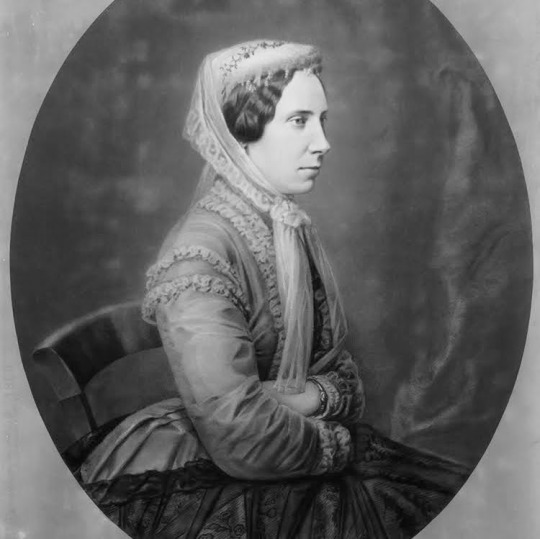
March 30, 1871 - Queen Lovisa died at 42 in Stockholm (presumably at the Royal Palace). At the end of the previous year, she had visited the Netherlands to keep vigil at her mother’s deathbed, and upon arriving back in Stockholm, both she and Karl XV fell ill. It’s not specified what Karl XV had with, but we know Lovisa caught pneumonia.
On her deathbed, she and Karl XV had long, dramatic conversations. Lovisa apologised to her husband “for all the times she might have done him wrong”, but Karl XV answered by crying and blaming himself. Karl’s mother, the Dowager Queen Josefina, is said to have fainted due to these dramatic scenes, and the couple’s daughter, Princess Lovisa (by then Crown Princess Louise of Denmark), described it as “it was as if mother laid bare her whole life for us.”
Photo 1: Framed photograph of Queen Lovisa by Mathias Hansen ca. 1865. Photo via Nordiska museet.
Photo 2: Portrait of Queen Lovisa by Court Photographer Johannes Jaeger, mid-1869. This is most likely one of the last portraits/photographs of Lovisa, but also the oldest Jaeger photo in the Royal Court's collection. Photo via the Bernadotte Library's archives.
Follow my blog & Instagram for more royal history
#swedish royal family#royal history#queen lovisa#louise of the netherlands#swedish history#on this day#today in history
2 notes
·
View notes
Photo

Her Majesty the Queen of Porto (1764-1782)
The short lived Queen Consort of Porto was born as Princess Maria Theresa of Norden in 1764 at Schloss Bentswich, Karl Duke of Norden’s seaside estate. Maria Theresa was the elder fraternal twin of Princess Paulina of Norden. During her infancy Maria Theresa became extremely weak and caught a fever at the age of two but was able to recover. Maria Theresa’s mother, Helene nursed her daughter back to health herself and spent every night in the nursery with her twin daughters. Maria Theresa and Paulina were inseparable during their youth and grew to have a close relationship with their elder sister Josefina. The twin girls were doted on by their father, Karl Duke of Norden, and were cherished by their childless aunts Princess Adelaide and Princess Viktoria. Maria Theresa was playful and vivacious and grew up to become a great beauty. Like her other sisters, Maria Theresa mastered seven languages, learned to dance, loved horseback riding, and helped organize several balls with her mother and aunts. Maria Theresa was sought after by several princes including Ferdinand Prince of Lugo, Crown Prince Joseph of Augustinia, and Crown Prince Frederick of Wardenburg. However, Maria Theresa was most enchanted by Crown Prince Luis of Porto who was dashing, handsome, and charming. Maria Theresa and Luis were married in 1780 in a huge ceremony at the Cathedral of Santa Maria in Porto. Luis loved his new bride and built a new palace for her near the villa they honeymooned at known as the Palace of Monte Real. While Maria Theresa had found herself deeply in love, she became homesick and longed for her mother Helene and twin sister Paulina. At the end of 1780, Luis’ father died and he ascended to the throne as King Luis II of Porto. Maria Theresa and her husband moved into the large and uncomfortable Evora Palace which she found unfashionable. Maria Theresa refurnished the palace and added a new wing which she had hoped would be used by her future children. In 1781 Maria Theresa found herself pregnant and the court was overjoyed. Luis spent all of his free time with his wife during her difficult pregnancy. In 1782 Maria Theresa gave birth to Crown Prince Carlos of Porto at the Evora Palace. However, shortly after the birth of her son Maria Theresa died from complications during childbirth. Maria Theresa’s death shocked the court and caused her husband to fall into a deep depression. Maria Theresa’s mother Helene and her sisters Josefina, Paulina, and Louise rushed to Porto to comfort her husband and her newborn son. In 1789, Maria Theresa’s son, Crown Prince Carlos would die after a long period of illness. The death of Maria Theresa and her son later on would always haunt Helene and her daughters.
#SophieOfRostock#SOR#sims4#historical#ts4#the sims#history#ts4 royals#ts4 royalty#thesims#the sims 4#ts4 history#ts4 historical#sims 4 history#sims 4 historical#sims 4 royals#sims 4 royalty
40 notes
·
View notes
Text
Spring Fashions

American Girl - Kirsten (in her work dress) and Addy (in her birthday dress)

Stardust Classics - Laurel (in her celebration dress) - Kat (in MAC Alison’s bridesmaid dress) and Alissa (in an iDoll modern dress with her own cloak & crown)

Princess & Me - Merida (in Belle’s ballet costume) - Ariel (in Tiana’s ballet costume) - Anna (in Cinderella’s ballet costume)

Magic Attic Club - Keisha (in Heather’s ballet outfit) - Megan (in Heather’s belle of the ball gown) - Rose (in her magician outfit) - Alison (in her genie outfit) and Heather (in her Hollywood starlet gown)

American Girl - Samantha (in her birthday dress) - Nellie (in her Valentine dress) - Molly (in her birthday dress) - Josefina (in her birthday dress) - Emily (in her matching birthday dress) - Felicity (in her birthday dress) - Elizabeth (in Felicity’s new tea gown)
#dolls#spring#american girl#stardust classics#princess & me#magic attic club#kirsten larson#addy walker#laurel the woodfairy#kat the time explorer#princess alissa#keisha vance#megan ryder#rose hopkins#alison mccann#heather hardin#samantha parkington#nellie o'malley#molly mcintire#josefina montoya#emily bennett#felicity merriman#elizabeth cole
6 notes
·
View notes
Text
How I would include "Elena of Avalor" in "Once Upon A Time."
Avalor is a realm that's part of New Fairy Tale Land. Seperated from the Magical Forest by a sea. It was once ruled by King Raul Castillo and Queen Lucia Flores. When their eldest daughter, Elena Castillo Flores, turned 15 they gave her the Amulet of Avalor. An enchanted amulet that protects its wearer. A year later, Avalor was invaded by the sorceress Shuriki. She killed Raul and Lucia and tried to kill Elena, but the amulet protected her by trapping her inside it. Shuriki, however, believed Elena to be dead. Elena's sister Isabel Castillo Flores and grandparents, Francisco and Louisa Flores, were saved by the Royal Wizard. Alacazar entrapped them in an enchanted painting that Shuriki's magic couldn't touch.
Francisco had a sister, Josefina Flores, who married a baron from the Magical Forest. His name was Riccardo Avellano. Their great granddaughter is Ella Avellano Flores. After the death of her adoptive step-father, Marcus Tremaine, Ella is forced into servitude by her step-mother Rapunzel Tremaine. For years, Ella is abused by Lady Tremaine and her daughter, Drizella. Then one day she meets Henry Mills while on her way to the King's ball. Three months later, Ella and Henry are part of a resistance formed by Princess Tiana to overthrow the King and Lady Tremaine. And they are steadily falling love though neither has admitted it.
Tiana sends them and Regina, Henry's adoptive mother, on a diplomatic mission to Avalor. She wished to make an alliance with Queen Shuriki. Henry, Ella, and Regina arrive in Avalor City and are greated by Chancellor Esteban. He brings them to the palace to meet Shuriki. But they soon discover that Shuriki isn't the rightful queen when they meet Alcazar who's been hiding in secret tunnels under the castle for 41 years. He reveals the truth about Shuriki and the amulet.
He told them that the amulet was enchanted with blood magic. Only a female member of the Flores bloodline can free Elena. A drop of Ella's blood frees Elena from the amulet. Elena did not age while in the amulet and was still 16 years old. With the help of her new friends, and new found 2nd cousin, Elena makes a plan to stop Shuriki. Henry and Alcazar leave for Alacazar's old house where they find his grandson Mateo. They'll need his help to free Francisco, Louisa and Isabel from the painting. Meanwhile Regina, Ella, and Elena confront Shuriki in the throne room. Esteban turns against Shuriki when he sees that Elena is alive. Revealing himself as Elena's cousin. A fight breaks out, but some of the guards fight on Elena's side. Including a young new guard named Gabe.
The guys return. Alcazar and Mateo get to work on breaking the enchantment on the painting. Regina keeps Shuriki busy. Alcazar and Mateo are successful, but Shuriki kills the old wizard before Regina can stop her. In the end, Shuriki is defeated when Elena and Ella push her through a window. After Mateo had broken her wand making her powerless. Shuriki's body was never found, but for now she was gone. And the people celebrated because the rightful ruler had returned. Ella, Henry, and Regina stayed for Elena's coronation as crown princess. Elena happily agreed to help Tiana's resistance. Regina, Ella and Henry returned home.
Adria Arjona as Princess Elena Castillo Flores. Lillianna Valenzuela as Princess Isabel Castillo Flores.
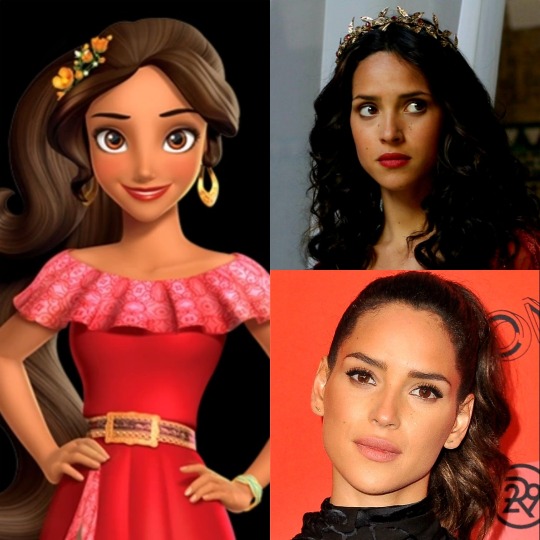

Alma Martinez as Louisa Flores. Tony Plana as Francisco Flores. David DeSantos as Esteban Flores.

Jane Seymour as Shuriki. Rafael Silva as Gabriel "Gabe" Núñez. Hector Elizondo as Alcazar de Alva. Jorge Lendeborg Jr. as Mateo de Alva.
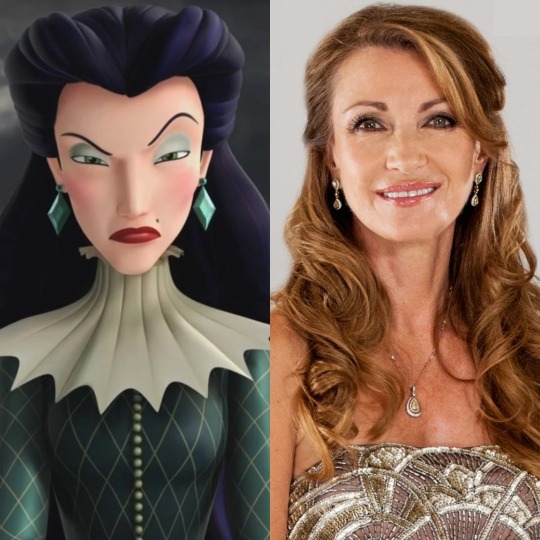

#elena of avalor#once upon a time#ouat#eoa#ouat s7#elena castillo flores#ella mills#regina mills#isabel castillo flores#esteban flores
23 notes
·
View notes